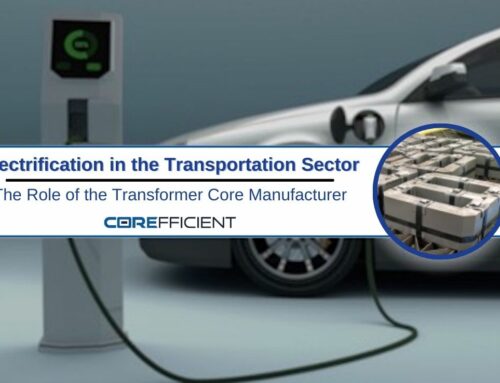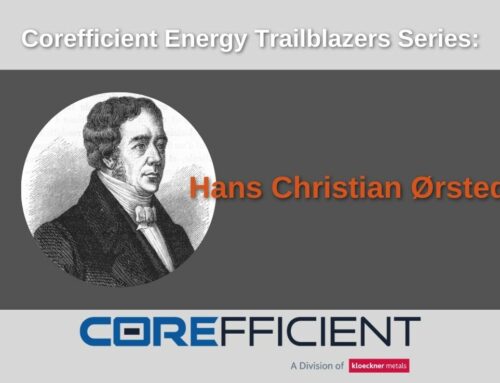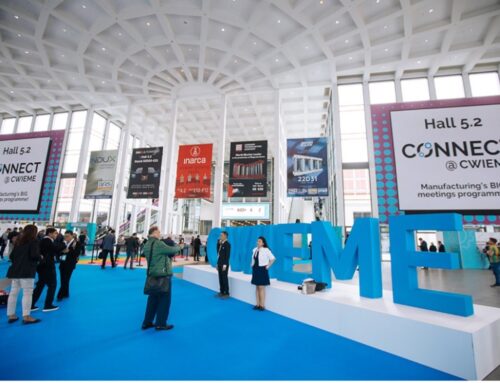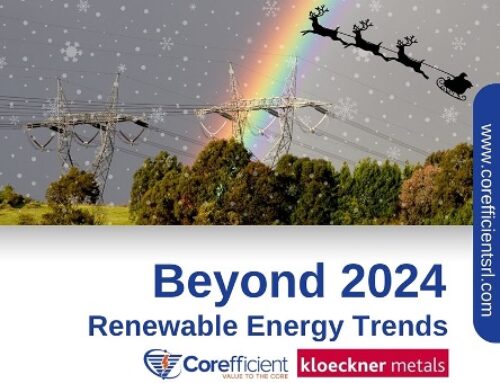
Michael Faraday & Joseph Henry
No one scientist invented the electrical transformer core. Like most inventions, the transformer core has evolved over time through a series of discoveries by scientists all over the world. Joseph Henry and Michael Faraday are considered the founding fathers of the electrical industry and electrical technology. Electric motors, generators, transformers, radio, and the telegraph all function on electromagnetic principles discovered by these men.
A transformer is a device that transfers electrical energy from one circuit to another through the use of inductively coupled conductors. In other words, by putting two coils of wire close together while not touching, the magnetic field from the first coil called the primary winding affects the other coil (called the secondary coil). This effect is called “inductance.” Inductance was discovered by Joseph Henry and Michael Faraday in 1831.
The phenomenon called electromagnetic induction was first noticed and investigated by British physicist Michael Faraday. Through the process of experimentation, Faraday discovered that, whenever the magnetic field around an electromagnet was made to grow and collapse by closing and opening the electric circuit of which it was a part, an electric current could be detected in a separate conductor nearby. By moving a permanent magnet into and out of a coil of wire (induction coil), he observed that this induced a current in the wire while the magnet was in motion. Moving a conductor near a stationary permanent magnet caused a current to flow in the wire, too, as long as it was moving. In his 1831 discovery, Faraday established the law of induction. Faraday’s law is one of the four Maxwell equations that define electromagnetic theory.
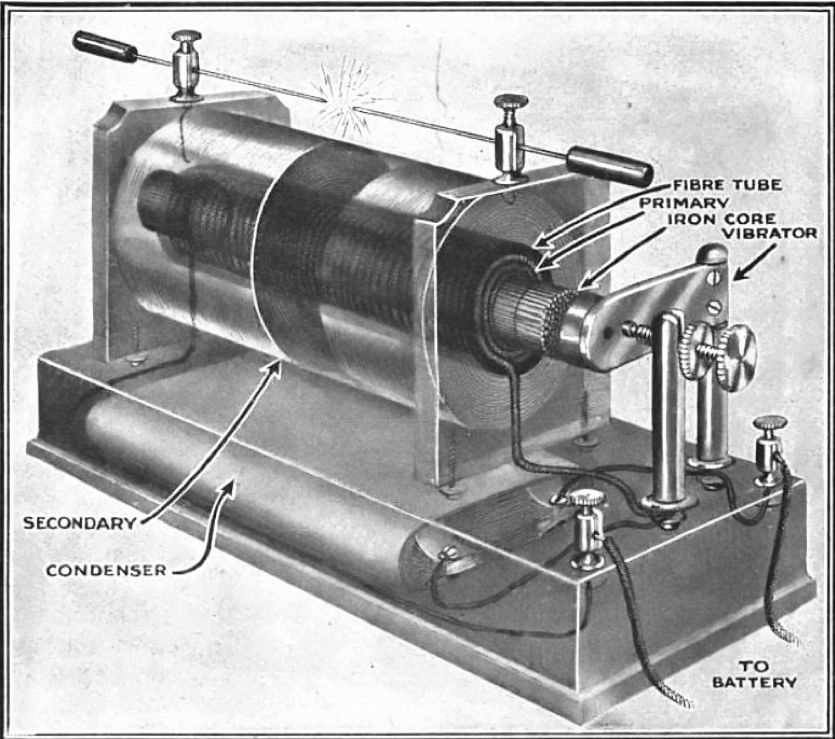
Around the same time that Faraday discovered electromagnetic energy and energy transfer through induction coils, Joseph Henry, a professor in Albany, New York, was himself experimenting with electromagnetic energy. He was the first to coil insulated wire tightly around an iron core in order to make a more powerful electromagnet. Using this technique, he built the strongest electromagnet at the time. He also showed that, when making an electromagnet by using two electrodes attached to a battery, it was best to wind several coils of wire in parallel. In addition, he noticed that when using a set-up with multiple batteries, there should be only one single, long coil.
William Stanley: Before and After
William Stanley is the next scientist with a household name to make a breakthrough in the evolution of the transformer core. However, as mentioned above, his discoveries were only possible with the previous contribution of other scientists.
A timeline leading up to William Stanley’s transformer core (after Faraday and Henry):
- 1878 – 1883 – The Ganz Company used induction coils in their lighting systems with AC incandescent systems.
- 1880 – Sebastian Ziani de Ferranti designed one of the earliest AC power systems with William Thomson (Lord Kelvin, of temperature).
- 1881 – Lucien Gaulard and John Dixon Gibbs first built a “secondary generator” or in today’s terminology a “step-down transformer,” which they designed with an open iron core.
- 1884 – In Hungary, Ottó Bláthy suggested the use of closed-cores, and Károly Zipernowsky discovered the use of shunt connections.
- 1884 – Use of Lucien Gaulard’s transformer system (a series system) in the first large exposition of AC power in Turin, Italy. This event caught the eye of William Stanley, working for Westinghouse. Westinghouse bought the rights to the Gaulard and Gibbs Transformer design. The 25-mile-long transmission line illuminated arc lights, incandescent lights, and powered a railway.
- 1885 – At the request of William Stanley, George Westinghouse ordered a Siemens alternator (AC generator) and a Gaulard and Gibbs transformer. Stanley began to experiment with this system.
In the 1880’s, scientists relied on DC power use, but it was hard to transmit over distance. In order to transmit over long distances, one would need a high voltage on a skinny wire or low voltage on a wide wire. High voltage on DC is very dangerous, and with low voltage the wire would have to be so thick that it would not be practical. With high voltage, it was impossible to step down the voltage in order to be used with light bulbs in a home.
Working for Westinghouse, Stanley arranged to have a number of the transformers and a Siemens alternating-current generator forwarded from England to Pittsburgh. In 1886, Stanley demonstrated the first complete system of high voltage alternating current (AC) transmission, consisting of generators, transformers, and high-voltage transmission lines. His system allowed the distribution of electrical power over wide areas. He used the system to light offices and stores along the main street of Great Barrington — the location of his family home. Stanley’s transformer design became a prototype for future transformers, and his AC distribution system formed the basis of modern electrical power distribution.
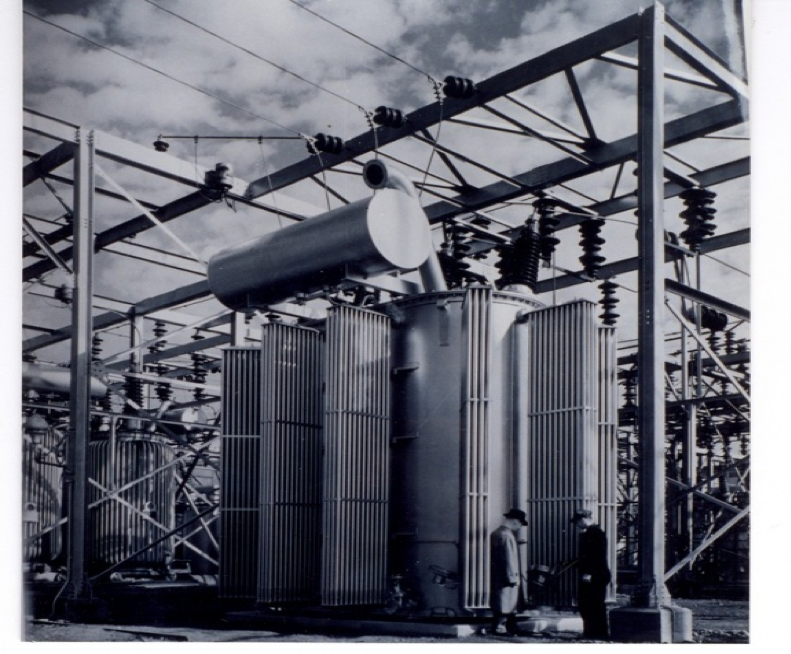
Westinghouse then began commercial production and shipped the company’s first commercial transformer to Buffalo, New York, where a local utility placed it in service. Orders for 25 alternating-current plants followed within months. In 1890, Stanley founded the Stanley Electric Manufacturing Company in Pittsfield, Massachusetts.
Corefficient and the Construction of the Modern Transformer Core
There are transformers all over every house, they are inside the black plastic case which you plug into the wall to recharge your cell phone or other devices. They can be very large, as in national utility systems, or they can be very small, embedded inside electronics. It is an essential part of all electronics today. Of course, Corefficient manufactures the large scale, industrial transformers for utility systems. We deeply understand that we wouldn’t be here without the historical contributions of scientists in the field of physics and engineering. We thought we’d take a moment to share with you how we make our transformer cores. Corefficient uses three main steps that ensure a perfect transformer core: material, material prep, and assembly.
STEP 1: Material
Corefficient uses the best materials available: cold-rolled grain–oriented electrical steel. Coefficient has extensive on-site testing capabilities to ensure that the material we receive from our suppliers has exceptional magnetic flux and permeability properties. The better the material, the easier it will be for the magnetic field of the core to flow. Also, high quality cold rolled grain-oriented electrical steel reduces losses by reducing the strength of the eddy current.
STEP 2: Material Prep
For our Step Lap Full MITRE cores, we use top of the line GEORG brand TBA lines for the cutting of electrical steel. For our wound cores, we use our highly versatile TRANCO and AEM machines, which allow us to work closely with our customers and their unique specifications for their core. We are able to cut lines that allow us to complete our manufacturing process with incredible speed.
STEP 3: Assembly
We then stack the core using our fully automated machine. We have full stacks of electrical steel that are ready to be shipped as logs, or further assembled into fully functional transformers within 15-20 minutes. Our Step Lap Full MITRE cores are moved down the assembly line, where our team performs a series of tests and quality checks including testing on a Yokogawa precision power analyzer.
For our DISTRIBUTED GAP cores, we offer core annealing services, where we utilize our continuously fed SECO/WARWICK annealing furnace first. Through an annealing process, the transformer cores’ magnetic properties are restored. In our annealing service, we strive to reduce carbon levels within electrical steel to levels less than .01%. Our core annealing process increases strength, formability, and elasticity to the electrical transformer core.
For more on our assembly line, watch this video of our electrical transformer top yoke disassembly:
https://corefficientsrl.com/knowledge-center/electrical-transformer-top-yoke-disassembly/
At Corefficient, we respect the heritage of physics and engineering, and use the discoveries of the past as a way to add to the future! Through our curiosity, experimentation, and observation, we are constantly trying to find ways to construct better, more efficient transformer cores for our customers.
More about Corefficient
Corefficient is a leader of the electrical transformer core market by consistently fulfilling the needs of our customers through operational excellence and product innovation, the needs of our employees through development, and the needs of our shareholders through financial stewardship. Visit Corefficient’s website today: https://corefficientsrl.com/. Contact us through our website or via phone: North America: 1 (704) 236-2510, Monterrey, México: (81) 2088-4000, or Toll-Free USA: 1 (844) 202-1226.

